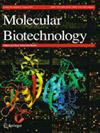基于网络药理学、分子对接和分子动力学探索姜黄素治疗膀胱癌的靶点和分子机制。
摘要
姜黄素是从姜黄中提取的一种酚类化合物,已在各种癌症的临床前模型中显示出抗肿瘤特性。然而,姜黄素治疗膀胱癌的确切机制仍不清楚。本研究旨在通过网络药理学、分子对接和分子动力学模拟等综合方法,阐明姜黄素治疗膀胱癌的治疗靶点和分子机制。研究利用PharmMapper、SuperPred、TargetNet和SwissTargetPrediction数据库获取姜黄素的相关靶点,利用GeneCards、CTD、DisGeNET、OMIM和PharmGKB数据库获取膀胱癌的相关靶点。使用 Venny 2.1.0 获得了药物-疾病相互作用靶点,然后使用 DAVID 工具进行了 GO 和 KEGG 富集分析。我们构建了一个蛋白质-蛋白质相互作用(PPI)网络,并确定了十个关键靶点。最后,我们利用 AutoDock Tools 1.5.7 进行了分子对接模拟,并通过 GEPIA、HPA、cBioPortal 和 TIMER 数据库对中心靶点进行了进一步分析。共获得了 305 个姜黄素的潜在抗癌靶点。GO功能富集分析共得出1105个术语,其中786个术语与生物过程(BP)相关,105个术语与细胞成分(CC)相关,214个术语与分子功能(MF)相关。此外,KEGG 通路富集分析还发现了 170 条相关信号通路。治疗膀胱癌可能需要抑制 PI3K-Akt 信号通路、MAPK 信号通路、表皮生长因子受体酪氨酸激酶抑制剂抗性和 IL-17 信号通路。激活 TNF、ALB、CASP3 和 ESR1,同时抑制 AKT1、表皮生长因子受体、STAT3、BCL2、SRC 和 HSP90AA1 也会阻碍膀胱肿瘤细胞的增殖。根据分子对接的结果,姜黄素以自发的方式与这些中心靶点结合,表现出低于- 1.631 kJ/mol的结合能。这些发现在转录、翻译和免疫渗透水平上得到了进一步验证。通过利用网络药理学和分子对接技术,研究人员发现姜黄素对治疗膀胱癌的多个靶点和途径具有不同的作用。姜黄素有可能通过抑制各种通路,包括 PI3K-Akt 和 MAPK 信号通路,以及与表皮生长因子受体酪氨酸激酶抑制剂抗性相关的通路和 IL-17 信号通路,阻碍膀胱肿瘤细胞的生长。姜黄素有可能通过增加 TNF、ALB、CASP3 和 ESR1 的表达,同时降低 AKT1、表皮生长因子受体、STAT3、BCL2、SRC、HSP90AA1 和其他靶基因的表达,从而扰乱膀胱癌细胞的细胞周期进程。这些发现揭示了姜黄素在膀胱癌中发挥抗癌作用的可能分子途径,这一新颖的研究策略不仅为深入了解姜黄素的抗癌机制提供了重要依据,也为膀胱癌的临床治疗提供了新的潜在药物和靶点。因此,这项研究对于推动膀胱癌治疗领域的发展具有重要的科学意义和实际应用价值。这一发现为开发新型、安全、有效的膀胱癌治疗药物提供了有力支持。

Curcumin, a phenolic compound derived from turmeric, has demonstrated anti-tumor properties in preclinical models of various cancers. However, the exact mechanism of curcumin in treating bladder cancer remains unclear. This study aimed to elucidate the therapeutic targets and molecular mechanisms of curcumin in the treatment of BC through an integrated approach of network pharmacology, molecular docking, and molecular dynamics simulations. PharmMapper, SuperPred, TargetNet, and SwissTargetPrediction were utilized to acquire targets associated with curcumin, while GeneCards, CTD, DisGeNET, OMIM, and PharmGKB databases were utilized to obtain targets related to bladder cancer. The drug-disease interaction targets were obtained using Venny 2.1.0, and GO and KEGG enrichment analyses were then conducted with the DAVID tool. We constructed a protein-protein interaction (PPI) network and identified tenkey targets. In conclusion, AutoDock Tools 1.5.7 was utilized to conduct molecular docking simulations, followed by additional analysis of the central targets through the GEPIA, HPA, cBioPortal, and TIMER databases. A total of 305 potential anticancer targets of curcumin were obtained. The analysis of GO functional enrichment resulted in a total of 1105 terms, including 786 terms related to biological processes (BP), 105 terms related to cellular components (CC), and 214 terms related to molecular functions (MF). In addition, KEGG pathway enrichment analysis identified 170 relevant signaling pathways. Treating bladder cancer could potentially involve inhibiting pathways like the PI3K-Akt signaling pathway, MAPK signaling pathway, EGFR tyrosine kinase inhibitor resistance, and IL-17 signaling pathway. Activating TNF, ALB, CASP3, and ESR1 while inhibiting AKT1, EGFR, STAT3, BCL2, SRC, and HSP90AA1 can also hinder the proliferation of bladder tumor cells. According to the results of molecular docking, curcumin binds to these central targets in a spontaneous manner, exhibiting binding energies lower than - 1.631 kJ/mol. These findings were further validated at the transcriptional, translational and immune infiltration levels. By utilizing network pharmacology and molecular docking techniques, it was discovered that curcumin possesses diverse effects on multiple targets and pathways for treating bladder cancer. It has the potential to impede the growth of bladder tumor cells by suppressing various pathways including the PI3K-Akt and MAPK signaling pathways, as well as pathways associated with EGFR tyrosine kinase inhibitor resistance and the IL-17 signaling pathway. Curcumin could potentially disrupt the cell cycle advancement in bladder cancer cells by increasing the expression of TNF, ALB, CASP3, and ESR1 while decreasing AKT1, EGFR, STAT3, BCL2, SRC, HSP90AA1, and other targeted genes. These findings reveal the possible molecular pathways through which curcumin exerts its anticancer effects in bladder cancer, and this novel research strategy not only provides an important basis for an in-depth understanding of the anticancer mechanism of curcumin, but also offers new potential drugs and targets for the clinical treatment of bladder cancer. Therefore, this study is of great scientific significance and practical application value for promoting the development of bladder cancer therapeutic field. This finding provides strong support for the development of novel, safe and effective drugs for bladder cancer treatment.

 求助内容:
求助内容: 应助结果提醒方式:
应助结果提醒方式:


